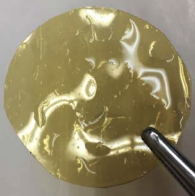
APPLICATIONS OF TECHNOLOGY
Sorbents, coatings, and selective membranes for:
- Automotive applications
- Consumer electronics
- Energy and energy storage
Some of the many possible uses of this technology:
- Gas sensing
- Gas Separations
- Dehumidification
- Water purification, desalination
- Ion-exchange
- Electrowinning
- Fuel cells
- Batteries
- Photoelectrochemical synthesis of liquid fuels, ammonia, and other compounds
BACKGROUND
Until now, generating functional monomers suitable for polymerization and identifying chemical reactions to effectively interconvert functionality on the polymer after it has been synthesized have been challenging. There have been limited synthetic strategies to diversify the way functionality is displayed along the polymer backbone, and the few reported strategies do not allow the manufacture of functionalized microporous polymers due to poor solubility and processability of the modified polymers. LBNL’s diversity-oriented polymers technology overcomes these limitations.
ADVANTAGES
- Polymers can be tailored to achieve desirable properties for a wide range of applications
- Polymers can be manufactured using solution-phase processing
- Technology enables membranes with higher conductivity, transport selectivity, and chemical stability than current options
TECHNOLOGY DESCRIPTION
Researchers led by Brett Helms of Lawrence Berkeley National Laboratory’s Molecular Foundry have identified a new class of monomers from which diversity-oriented libraries of intrinsically microporous polymers are prepared with highly desirable characteristics for manufacturing and service life as a membrane, or other component. The applications are broad, including gas separations, fuel cells, batteries, water purification, and many others. Pore dimensions of the polymers range from 0.5 nm to 2 nm, and porosity falls ranges from 5% to 40%.
In addition, the research team identified a new class of electrochemical devices that make use of the microporous polymer membranes to extend cycle life and enhance energy efficiency, relative to both non-selective porous polymer membranes and partially selective polymer membranes currently available.
DEVELOPMENT STAGE: Proven principle
PUBLICATIONS:
“Design Rules for Membranes from Polymers of Intrinsic Microporosity for Crossover-free Aqueous Electrochemical Devices,” Joule, Volume 3, Issue 12, 18 December 2019
“Universal chemomechanical design rules for solid-ion conductors to prevent dendrite formation in lithium metal batteries,” Nature Materials, 27 April, 2020
STATUS: Patent pending; PCT application US2019/046886 published. Optioned for certain Fields of Uses. Parties interested in licensing or collaborative research should contact ipo@lbl.gov.
SEE RELATED TECHNOLOGIES IN THIS FIELD:
Longer Cycle Life, Lower Cost All-Organic Redox Flow Batteries, 2016-126
